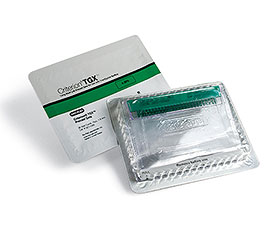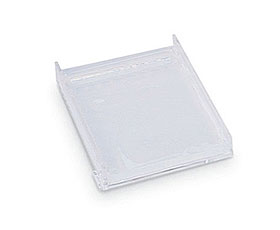Electrophoresis Gel Systems
Bio-Rad, a leader in gel electrophoresis, manufactures a wide range of systems for the separation and analysis of proteins and nucleic acids. In addition to electrophoresis gels and chambers, we offer a full line of reagents and instruments for blotting, processing, imaging, and data analysis.
Protein electrophoresis and blotting systems are available in mini, midi, and large formats for both 1-D and 2-D at the analytic scale, as well as preparative electrophoresis systems including continuous-elution tube gel technologies. The most popular vertical electrophoresis gel system is the Mini-PROTEAN® System.
Features of the mini format systems include:
- Electrophoresis gel run times as short as 15 min
- Full integration with our wet and rapid semi-dry blotting systems
- A wide range of precast gels — for denatured protein and native protein separation or IEF
- Configurable to accommodate 1–12 electrophoresis gels
We also carry a wide variety of electrophoresis systems for nucleic acid separations. In addition to vertical PAGE systems, submarine horizontal electrophoresis gel systems are available in different widths and lengths. Precast electrophoresis gels are available for both vertical and horizontal systems.
Protein Electrophoresis Gel Types
The ease, speed, large number of options — and importantly, the reproducibility of precast electrophoresis gels — make them an attractive alternative to hand casting. Precast electrophoresis gels are available in a wide range of acrylamide percentages (including gradient gels), well numbers, and buffer systems for both mini and midi electrophoresis gel formats. Bio-Rad's TGX (Tris/Glycine eXtended) Electrophoresis Gels are a modification of standard Tris/glycine (Laemmli) chemistry with a longer shelf life and hence increased reproducibility over time. Unlike traditional Tris/glycine electrophoresis gels, TGX Gels can be run in very short times at high voltages with excellent results. Other buffer systems include Tris/tricine for separation of low molecular weight proteins, and Tris-HCl, Bis/Tris and Tris-acetate gels that can be used for separation of both native and denatured proteins.
Bio-Rad's stain-free electrophoresis gels are a recent innovation in protein electrophoresis. Immediately after electrophoresis, our stain-free gels can be viewed using a fluorescence imaging system without any staining; blots can also be visualized immediately after transfer and again after development, allowing total protein normalization and quality-checking at every step of the western blotting workflow. TGX Stain-Free Gels use the standard Tris/glycine buffer system, and proteins display conventional Laemmli separation and migration patterns. Imaging and analysis can be completed in less than 5 minutes after a run. Stain-free acrylamide solutions and kits are available for hand casting electrophoresis gels.
Stain-free electrophoresis gels have many advantages:
- No staining or destaining steps are required
- Gels are immediately visualized after running to ensure acceptable results before next stage
- Western blotting efficiency is readily determined
- Proteins are not modified by the stain-free process; no interference with downstream protocols
- The entire western blotting workflow is faster, while performance is enhanced
- No special reagents are required
- Gels can be used directly after visualization for techniques such as mass spectrometry
- Sensitivity is comparable to Coomassie staining
- Eliminates toxic waste disposal problems associated with stains and organics such as methanol
Other types of precast electrophoresis gels that are available are gels for isoelectric focusing (IEF) for the first dimension of 2-D electrophoresis and zymogram gels for the detection of protease activity. IEF gels are available with either a narrow pH range of 5–8 or a wider range of 3–10, with various numbers of wells and well volumes. For IEF using immobilized pH gradient (IPG) strips for the second dimension of 2-D electrophoresis, we offer precast gels that have combs that accommodate IPG strips. Zymogram gels contain either casein or gelatin as substrates for proteases.
Nucleic Acid Electrophoresis Gel Types
Horizontal submarine agarose gels are used for the majority of nucleic acid separations. An agarose electrophoresis gel can be used to separate a much wider range of DNA and RNA sizes than a polyacrylamide gel. Another advantage of horizontal submarine gels is that multiple rows of wells can be formed, enabling the screening of large numbers of samples on a single gel. Precast gels are available with either TBE or TAE buffers, with or without ethidium bromide, in a range of sizes and different numbers and configurations of wells, including well spacing suitable for loading with a multichannel pipet (for example, 96-well and 192-well agarose electrophoresis gels). Additionally, Bio-Rad has systems for pulsed-field gel electrophoresis (PFGE), including all the different modes: CHEF, PACE, and FIGR, and the major modifications of these techniques.
Vertical polyacrylamide gels are also used for some nucleic acid separations, for example, purification of synthetic oligonucleotides. Polyacrylamide electrophoresis gels yield sharper bands than agarose gels. Bio-Rad carries both TBE and TBE-urea precast gels. TBE vertical gels are used for the analysis of PCR products and other dsDNA products and for RNase protection assays. TBE-urea electrophoresis gels are used for checking oligonucleotide purity, the resolution of small fragments, and RNase protection assays, and can also be used for the gel electrophoresis step of northern blotting.
Electrophoresis and Blotting
-
Electrophoresis Chambers
-
Blotting Systems
-
Electrophoresis Equipment
Related Topics




